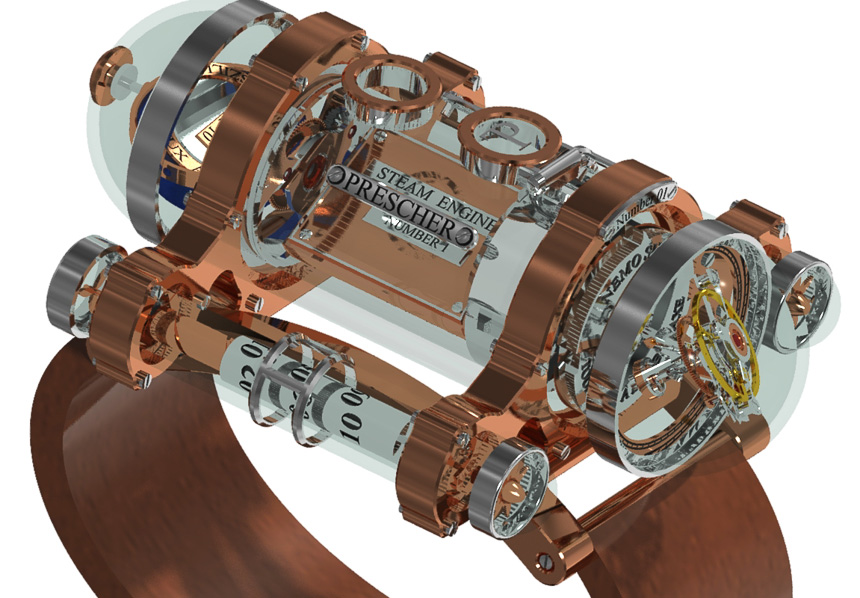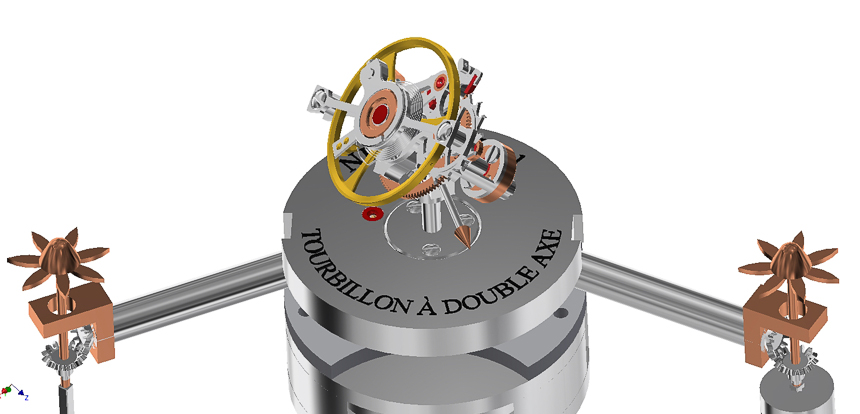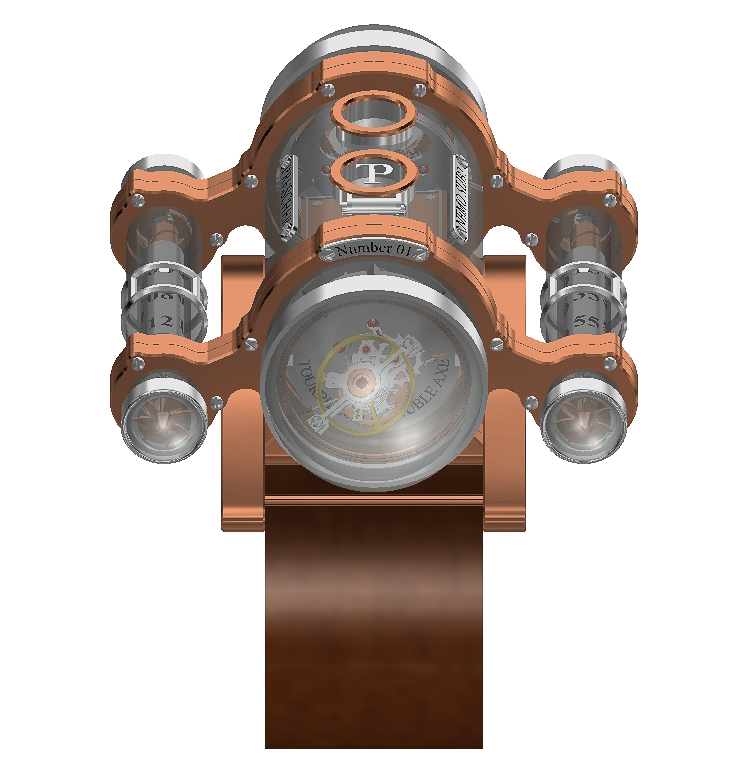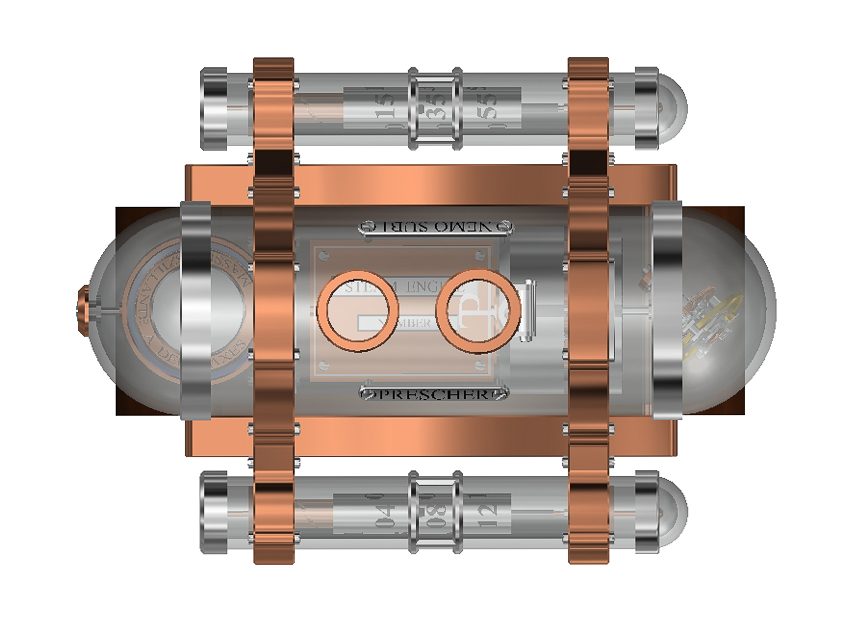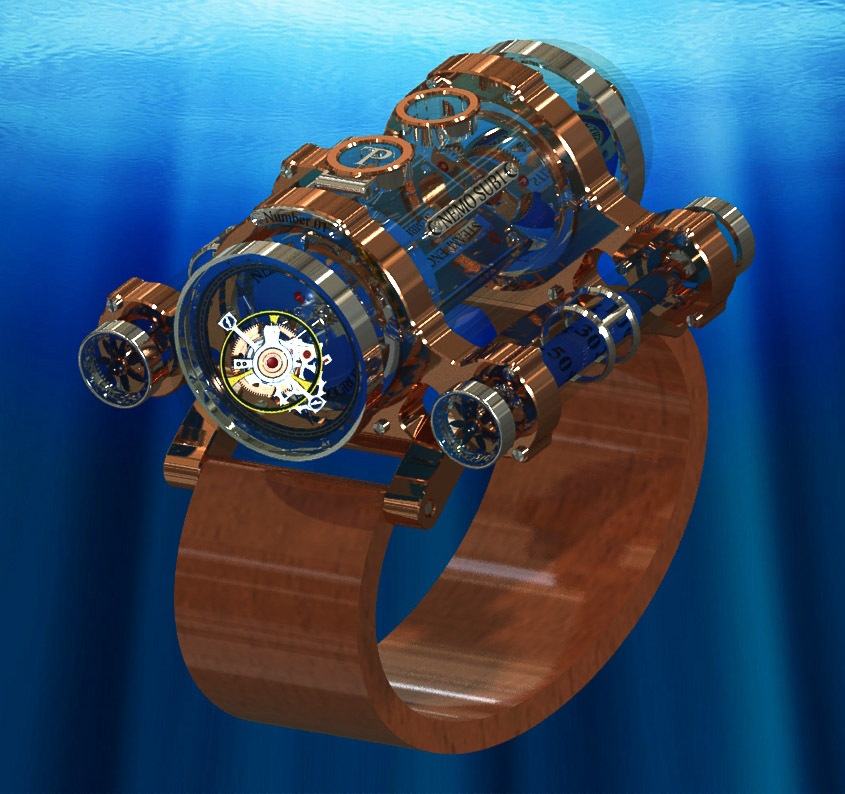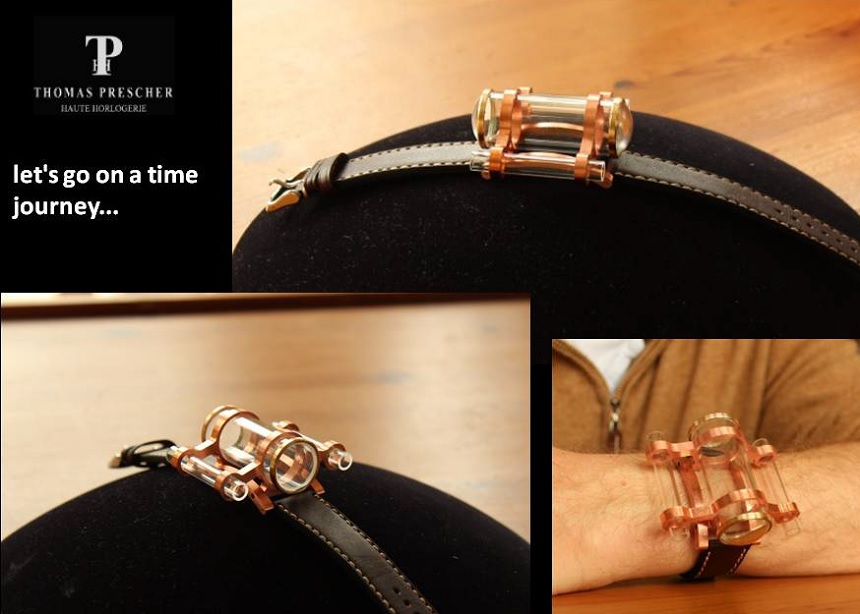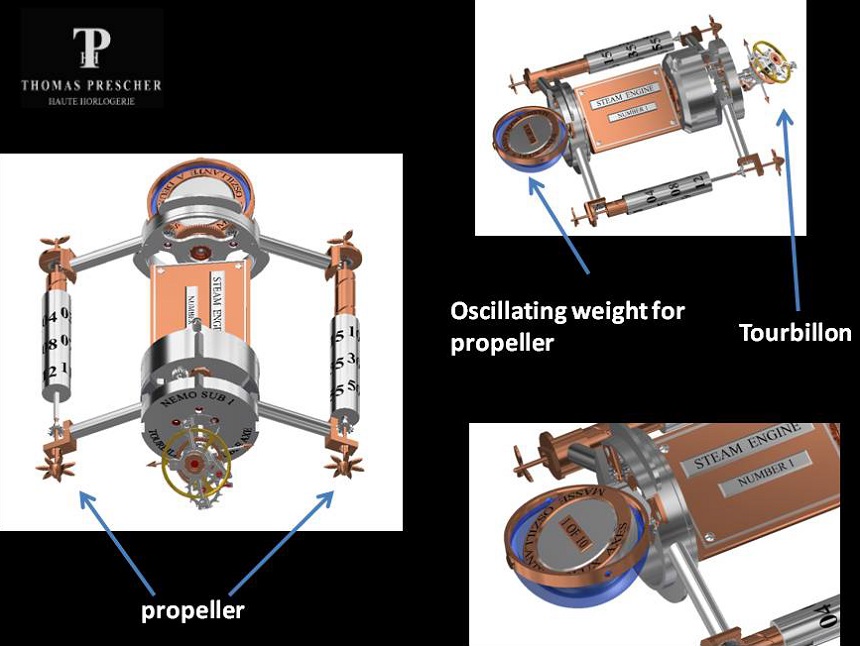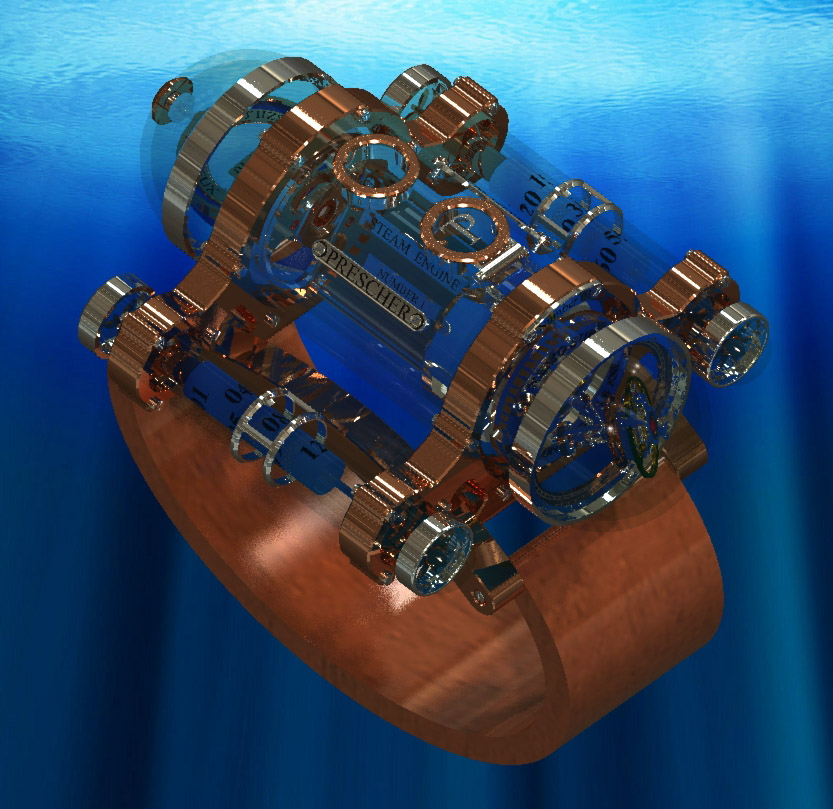
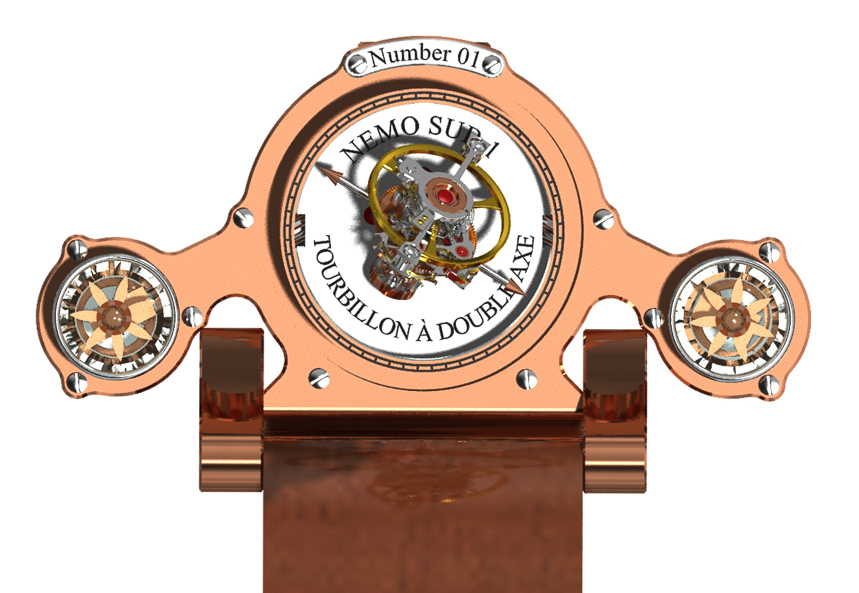
Toward the rear of the case is another automatic rotor-style system. This is what he calls a “double axis oscillating weight.” It looks a bit like a gyroscope, and when it moves it powers the little propellers to spin that are located in the side tubes. On the top of the case are two porthole style devices that are actually the crowns. One is used to set the time, while the other is used for winding the watch.
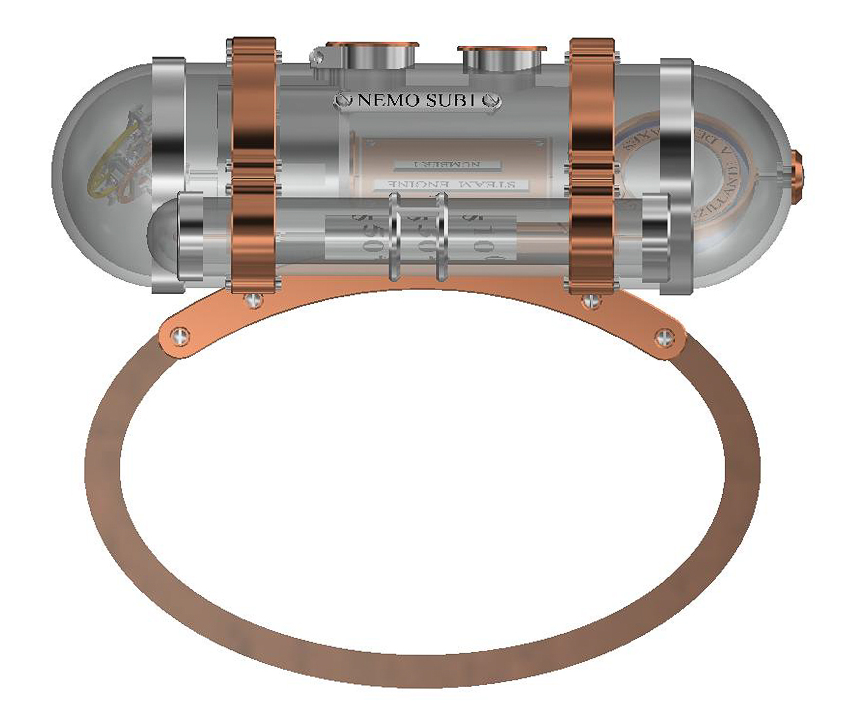
Quite literally everything about the Nemo Sub I is ambitious and original. I’ve never see anything quite like it before, and I have a feeling that only someone like Thomas Prescher could come up with an item such as this. It is loud and wild-looking on purpose; meaning that with a limited edition high-end object such as this, conversations about aesthetics are almost moot. It is beautiful simply because it exists and has no desire to conform to traditional notions of horological beauty or attractiveness. It is a non-watch item of art that happens to live in a watch world. I really look forward to seeing this mostly sapphire crystal wrist tube soon and giving a full hands-on report.
Thomas Prescher will produce just five pieces of the Nemo Sub I watch (don’t mind the “1 of 10” images on the computer renders) starting in 2014 with the first piece as soon as a customer is found. As the name implies, there is likely to be a Nemo Sub II, but we will have to wait for that… prescher.ch
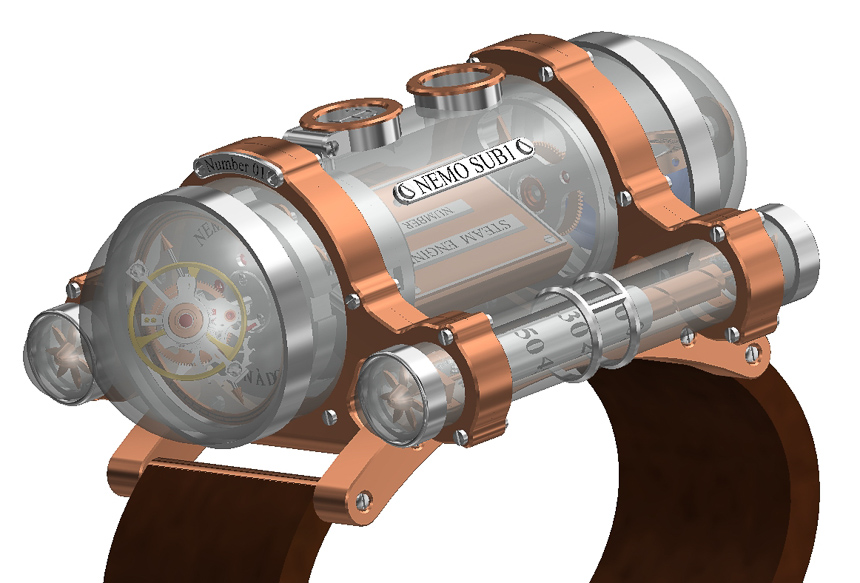
Nemo Sub I technical specs from Thomas Prescher:
Case:
• Central tube: Sapphire glass tube diameter 20mm, Length ca. 67mm
• Side tubes: Sapphire glass tube diameter 7mm, Length 47mm
• Frame material: 18k Red gold 750/1000 and Palladium 950/1000
Indications/Functions:
• Hours: Spiral tuning bar in the right side tube; it turns 3 times in 12 hours before jumping back to its original position.
• Minutes: Spiral tuning bar in the right side tube, it turns 3 times in one hour before jumping back its original position.
• Seconds: Double hand with red gold tips fixed to the 2nd Axis of the tourbillon.
• Propellers: The propellers in the side tubes have aesthetic purpose only.
Setting/Winding:
• Hatch/bulkhead on top of the tube has to be opened and from there a crown is risen. After switching from neutral to setting or winding with the hatch switch, the crown can be turned and the movement set or wound.
Movement:
• Double Axis Tourbillon
o First Axis coaxial with the middle tube center, holding pipe with inner axis to transmit force.
o Second axis is inclined 45° and fixed to the rotating part of first tourbillon axis.
• Tourbillon:
o 21,000 beats per hour, regular balance wheel with flat hairspring.
o Special system design that does not require lower escapement bridge.
• Movement structure built in eight sections:
o Section one is the tourbillon, section two is the reduction gear, section three is the time indication gear, section four is the barrel, section five is the automatic gear, section six is the oscillation weight, section seven is the propeller gear, and section eight is gyroscopic oscillating weight for the propeller system.
• Vertical automatic system winds movement while turning in either direction, single barrel with mainspring, power reserve ca. 40 hours.
• Movement designed in vertical position.
• Unique time indication system with two spiral turning bars with engraved numbers. After three turns a hidden mechanic uncouples and the bar jumps back in its starting position.
• Double 90° inclined gear to transmit rotation through a hidden connection in the frame from central tube to time indication.
• Double 90° inclined gear to transmit rotation through a hidden connection in the frame from central tube to propellers.

